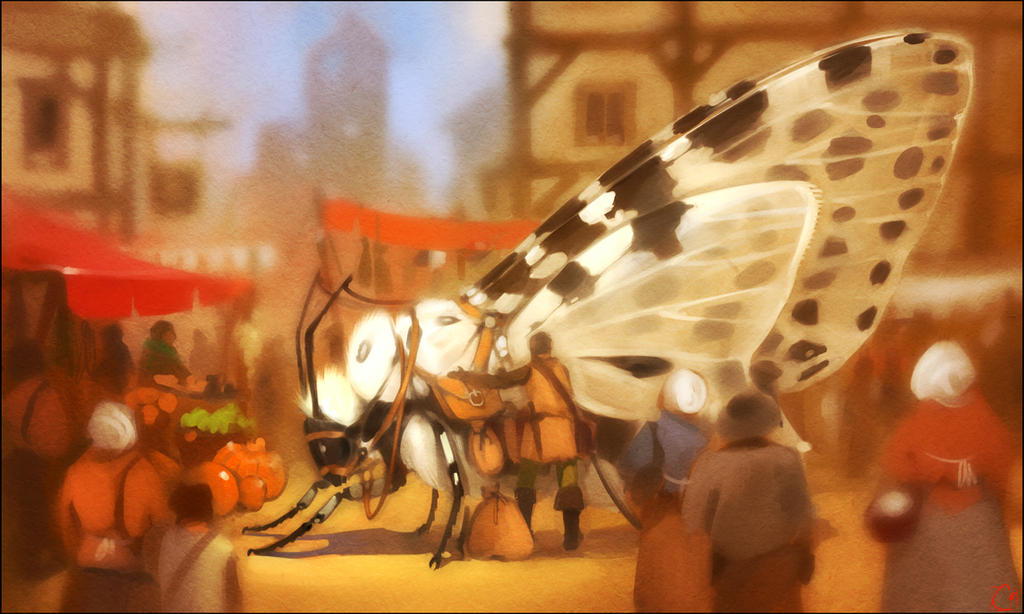Fractals. Fractals are patterns that repeat infinitely and look the same at all scales. That is, of course, a highly simplified definition, but the point is fractals are repeating patterns where the components of the whole are identical, or nearly so, to the whole. There's all kinds of interesting math involved with true fractals, but I'm not a math major, and this isn't a science blog. So why bring fractals up at all? Well they are useful in RPGs that's why...
Observing the Pattern
I first became aware of the uses of fractals in gaming through reading FATE Core. It's probably not the first time I had seen it, but it was certainly the first time it was called out. Fate operates on a system of "aspects" short descriptive phrases that detail key aspects of a character, or a thing, or a place, or a group, etc. That's the fractal at work.
Of course that's oblique as hell if you don't know Fate so let me explain that system a bit ...
Characters in Fate have, at a minimum, two Aspects; a High Concept, and a Trouble. The High Concept aspect is something that sums up the whole character is a single phrase. Consider a phrase like "Chicago's only wizard private eye" for a character like Harry Dresden. It gives you a good idea of who the character is and what he can do. "Captain of the USS Enterprise" might be a good concept for Captain Kirk (or Capt. Picard for that matter).
The Trouble aspect is something that generally causes trouble for the character. It could speak to a character flaw "Gambling addict", or a character strength "World's only honorable thief". Harry Dresden might have "Strapped for cash" as a trouble since he is always scraping by, while Kirk might have something like "Leads with his heart". A trouble isn't
always a bad thing, but its something that can be leveraged against the character at least as often (and usually more often) as it can be leveraged
for them.
Additional aspects can be given to a character to further define them. Generally in Fate games this is limited to a total of five (high concept, trouble, and up to three others). With a good set of aspects a character can be detailed quickly and easily with minimal mechanical requirements.
Scaling Up, Scaling Down
Now here's where Fate employs the fractal concept:
anything you can describe can be done so with a High Concept and a Trouble. The USS Enterprise might be the "Flagship of the Federation" and "Where no man has gone before". The Rebel Alliance in Star Wars might be both "Rebellion against the Empire" and "Outmanned and outgunned". While an item like the
Hope Diamond might be "The most famous diamond in the world" and "Cursed with misfortune and death".
This can be taken farther, you can apply skills and health to these things as well. A starship might have "skills" representing its systems; Sensors, Weapons, Engines, etc. If you remember to scale ships against each other you could easily establish an easy to use hierarchy. Organizations can have skills as well, skills like Diplomacy, Negotiation, Trade, Military, and the like.
Health is easy for ships, you can have points for Shields, Hull, and Energy; this is pretty easy to grasp since we already do this in many games. Organizations however might also have "health" type statistics like Influence, Resources, Morale, and such. During a war an organization may take damage on its Morale and Resources after losing battles for instance. It's all the same basic idea under the names.
The Big Picture
Once you grasp the basics its easy to look at something and really see the fractal begin to unfold at multiple levels. Here's an example I used a few weeks back:
- The Federation
- High Concept: Interstellar United Nations
- Trouble: Enemies at the Gates (Klingons, Romulans, etc,)
- Skills: Diplomacy, Negotiation, Trade, Military, etc
- Health: Influence, Resources, Morale
- "Equipment" USS Enterprise NCC 1701
- High Concept: Flagship of the Federation
- Trouble: Exploring Beyond Human Space
- (other aspects as needed)
- Skills: Sensors, Weapons, Engines, etc.
- Health: Shields, Hull, and Energy
- "Equipment" Capt. James T Kirk
- High Concept: Captain of the Enterprise
- Trouble: Goes on Away Missions Himself. (seriously what kind of organization risks its command officers on scouting?)
- Aspect: Have Phaser Will Travel
- Skills: Command, Fighting, Carousing (specialty with aliens)
- Health: Physical, Mental
- "Equipment" Phaser Mark 2
- High Concept: Phased Energy Rectification Pistol
- etc, etc,
At any given point in that tree you can essentially fully define that discreet section as a "character" and that applies up and downward. Certainly it's odd to think of Captain Kirk as "equipment" for the Enterprise, but I could just as easily defined the entire crew as a level between the ship and Kirk. Likewise the Starfleet could be inserted between the Enterprise and the Federation. That could even be broken down further, with Starfleet as a whole containing multiple armadas or such. Above the Federation you could detail the Alpha Quadrant, and then above that the Milky Way if you had reason and need to do so.
You needn't feel rigidly beholden to the formula either. It's reasonable that a Phaser wouldn't have skills and may not need health. It's even possible that there may be no reason to detail a phaser to this level at all. The idea isn't to be slavish to the design, but to use the fractal concept to its strengths.
Different Picture, Same Idea
Fate isn't the only RPG that can utilize a fractal concept. To a certain extent most games use parts of this idea. Vehicles have statistics like strength and speed and health in some form or another. Recognizing the fractal and understanding how you can use it in your games are different things though. Understanding and employing the fractal paradigm can help you to provide more definition to your games, allow for interactions between characters and their environment, groups within the setting, and beyond.
The Cypher system, for example, already uses a ten level scale for objects, difficulty of tasks, and NPCs of all kinds. Much of the same rules for NPCs could be applied to groups like the Estate in The Strange or the Angulan Knights in Numenera. Give the organization a level, and through that a difficulty, detail some skills that it can leverage, assign it some "health", some damage it can inflict when it attacks other organizations, etc.
Granting this level of detail to a group or groups within your campaign will allow you to more easily track how your character's actions impact these organizations. If a PC group is hellbent on destroying the Marish clan in Qi, their actions will serve to deal damage to the clan's "health". Rather than having an organization "die" when its health is depleted however, you reduce its level, and make it less powerful. Destroying a group could become an entire campaign as they slowly whittle away at the membership and leadership of the group, stealing their influence, destroying their relationships with other groups, and the like.
Similarly this will allow you to design in elements that may not be present in your game system of choice. The Cypher system doesn't have detailed rules for vehicles, but if I wanted to hack the system for a Star Wars game vehicles would likely be an important part of that game and some degree of rules would be needed for starships and space-fighters.
Hopefully the idea of using the fractal structure for your games makes sense, and maybe it'll inspire your game in some way. It can also help those creating new rules for games to use a conservation of mechanics, keeping things simple, which is better in my opinion. In the end though, whether or not you make use of the fractal structure for your own games will come down to what mechanics you use and personal preference, but I think being aware of it adds another important and useful tool to a GMs arsenal.




